The journey of discovery of animals, creatures and fantastic places in the Italian peninsula continues with Tuscany, thus reaching its sixth stage. The Finestre Sull’Arte project is in collaboration with the Ministry of Culture and aims to bring visitors to museums and cultural places to learn and at the same time have fun in the company of your family and children, because they are safe places. So let’s find out together what animals and fantastic places Tuscany has to offer.
The Chimera of Arezzo has become a symbol of the National Archaeological Museum in Florence: in fact, it is one of the most important works in the museum and a must-see. It is an exceptional Etruscan bronze in the guise of a chimera, that is, a lion in an aggressive pose with its mouth open, its back arched from which a goat’s head springs and in place of its tail a snake biting a goat’s horn. A monster of Greek mythology, the chimera combines three different animals in its body and is often considered the embodiment of destructive forces. According to myth, the chimera dwelt in Lycia, where it destroyed everything by spitting flames from its three mouths; however, the hero Bellerophon managed to defeat it with the help of the winged horse Pegasus. Dating from the late fifth and early fourth centuries B.C., the bronze sculpture was discovered on November 15, 1553, during work on a new rampart in the walls of Arezzo and was immediately recognized as a masterpiece of Etruscan art, so much so that Grand Duke Cosimo I de’ Medici wanted to bring it immediately to Florence. It was first placed in the Palazzo Vecchio until 1718, then was transferred to the Uffizi by order of Cosimo III, and finally in 1870 came to the Archaeological Museum, where it still fascinates visitors.
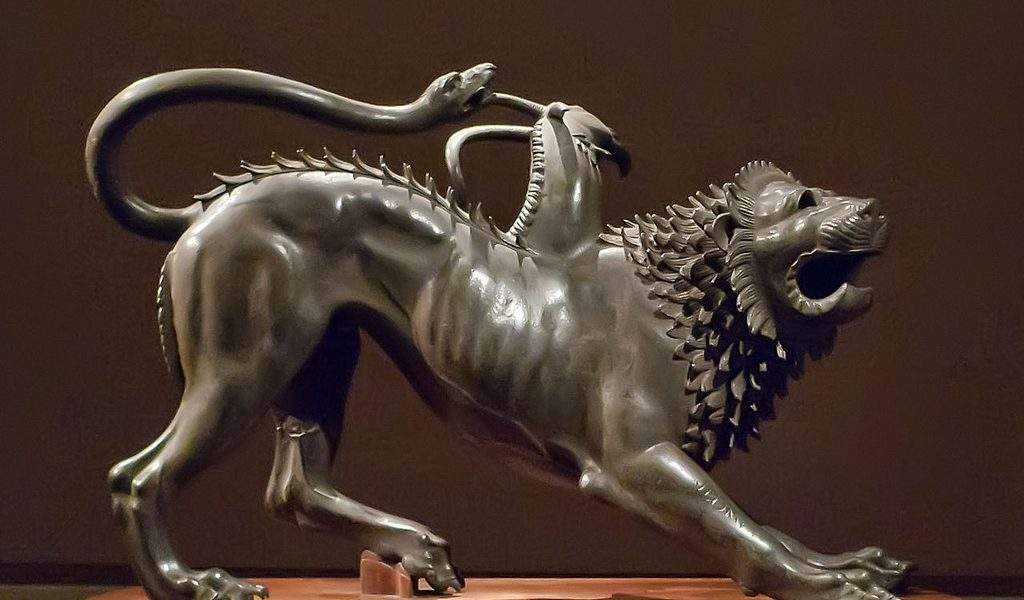
A large sea monster with fangs and tail twisted back on itself is depicted in the center of the scene as it is about to hurl itself at the daughter of the king of Ethiopia, Andromeda, who had been offered as a sacrifice to appease the monster’s hunger. On the monstrous creature’s back is the young Perseus who will bravely slay him. Indeed, the famous painting created by the eccentric flair of Piero di Cosimo between 1510 and 1515 has as its subject the liberation of Andromeda by Perseus, a story from Ovid’s Metamorphoses. The work was conceived as a piece of furniture for the wedding chamber of Filippo Strozzi the younger and Clarice de’ Medici inside Palazzo Strozzi. The artist’s imagination introduces into the work strange musical instruments played by some bystanders, oriental-style costumes, and the triple depiction of Perseus, who also soars through the sky in winged shoes and celebrates the successful feat. From Palazzo Strozzi the painting passed into the collection of Sforza Almeni, secret valet of Grand Duke Cosimo I de’ Medici, and later into the Medici collections. As early as 1598 it was in the Tribuna of the Uffizi.
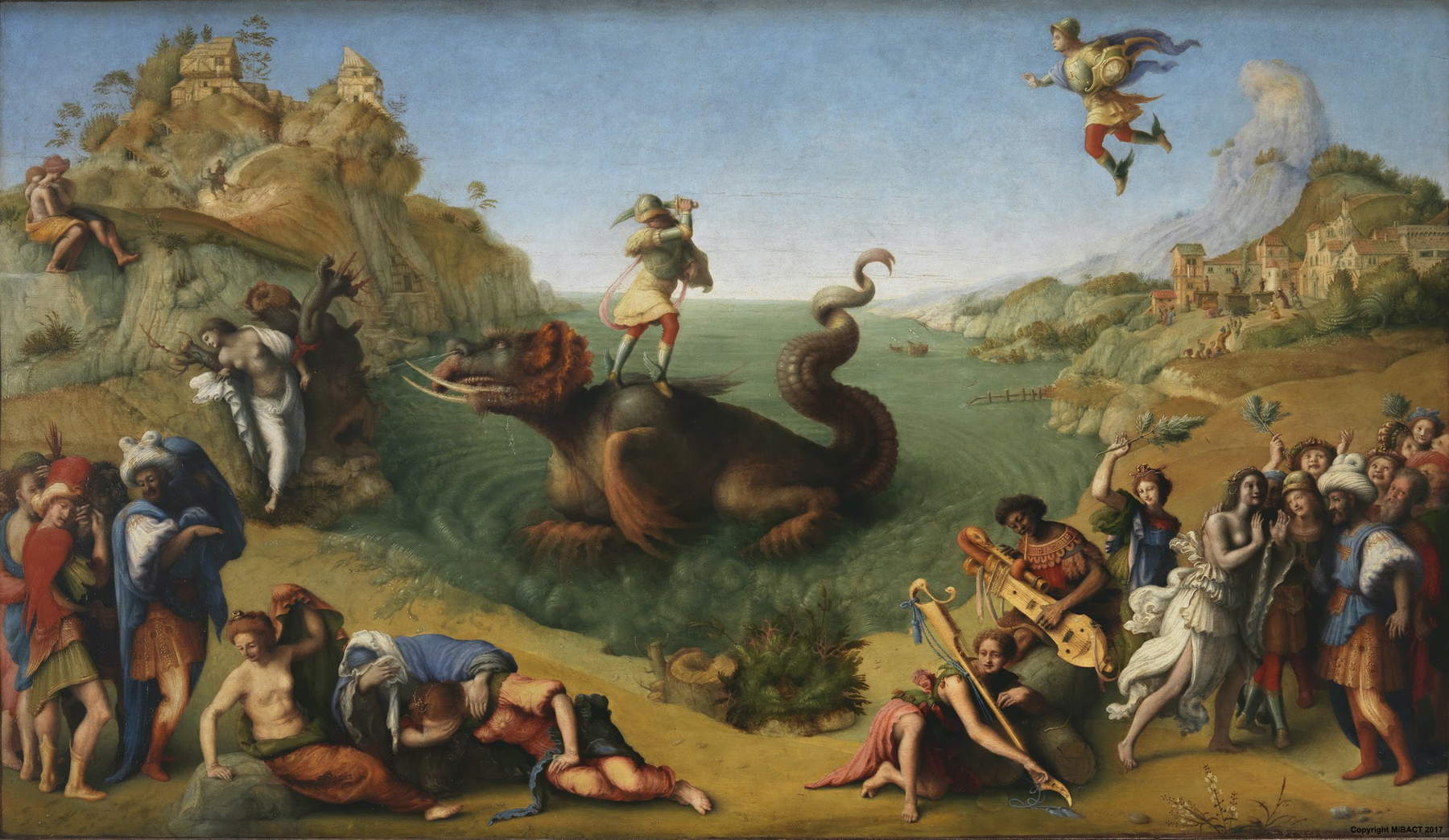
One of the most famous masterpieces by Symbolist Max Klinger, housed in the Gallery of Modern Art in the Pitti Palace in Florence: it depicts two young people entwined in the waves of the sea in a passionate kiss. The fair-skinned young maiden with long red hair clasps her arm around the boy’s neck, while the young man’s legs are entwined with her mermaid tail. These are two fantastic creatures depicted in the painting, for they are a merman and a Nereid. In Greek mythology, mermen were descended from the son of the sea god Poseidon and the Nereid Amphitrite, while Nereids were sea nymphs who were the daughters of Nereus and the Oceanina Doris. Two sea creatures therefore of a benevolent nature who are carried away by amorous passion among the blue-green waters. Max Klinger created the painting in 1895 and it is still considered one of the masterpieces of European Symbolism.
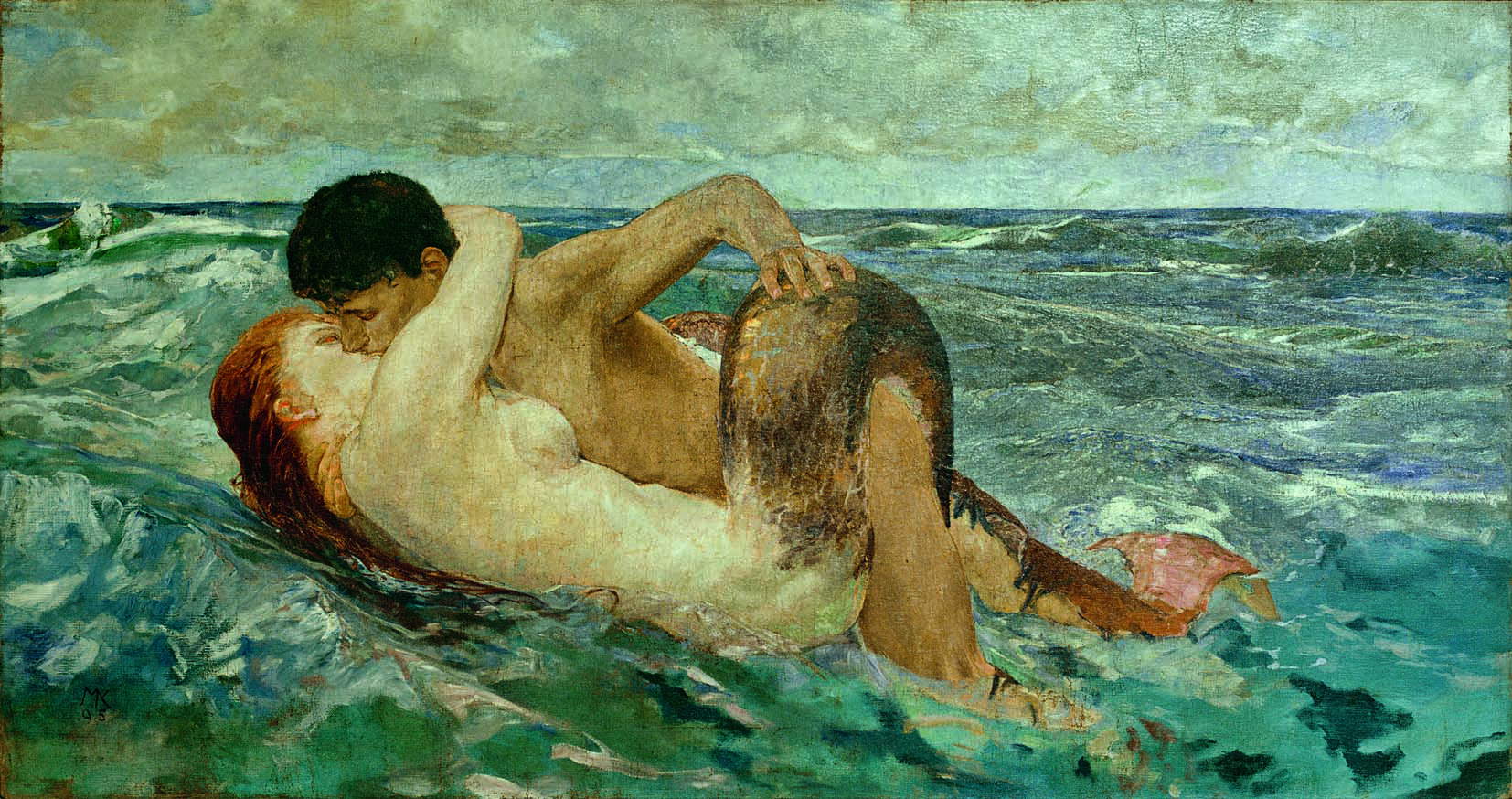
Three devils are brutally attacking Saint Anthony the Abbot who is already lying on the ground, who is unable to defend himself from the beatings inflicted on him by the demonic creatures that have the appearance of half human and half birds of prey. They hit him with sticks and even snakes, which the devil in the center is using as whips; the devil on the right is even dragging him by his clothes. The beating by the devils is part of those harsh trials that Anthony Abbot had to face in the desert during the period of his meditation, when according to Christian tradition he was forced to overcome diabolic temptations. The painting is the work of the Sienese painter Stefano di Giovanni better known as Sassetta. The artist set the scene in a mountainous landscape, interspersed with clumps of grass and a few trees. Originally executed in 1423, the work was part of the predella of the altarpiece of the Arte della Lana, used by the guild for the annual Corpus Christi festival. Since the mid-19th century it has belonged to the collection of the Pinacoteca Nazionale di Siena.

The National Etruscan Museum in Chiusi houses the funerary winged sphinx with a female face dating from the mid-6th century BCE. The sculpture features the body of a feline from which sprouts a large wing that twists back on itself at the end and the head of a woman with large elongated eyes and bob hair that reaches her shoulders, in the manner of Cleopatra. The figure is sitting on its hind legs which is usual for a sphinx in the collective imagination. The sculpture was built with fetid stone, a particular type of limestone that characterizes the Chiusi area and is so called because there are sulfur particles inside it. This type of stone was used extensively by the Etruscans of ancient Chiusi, especially in the making of epigraphs, architectural decorations, and memorial stones.
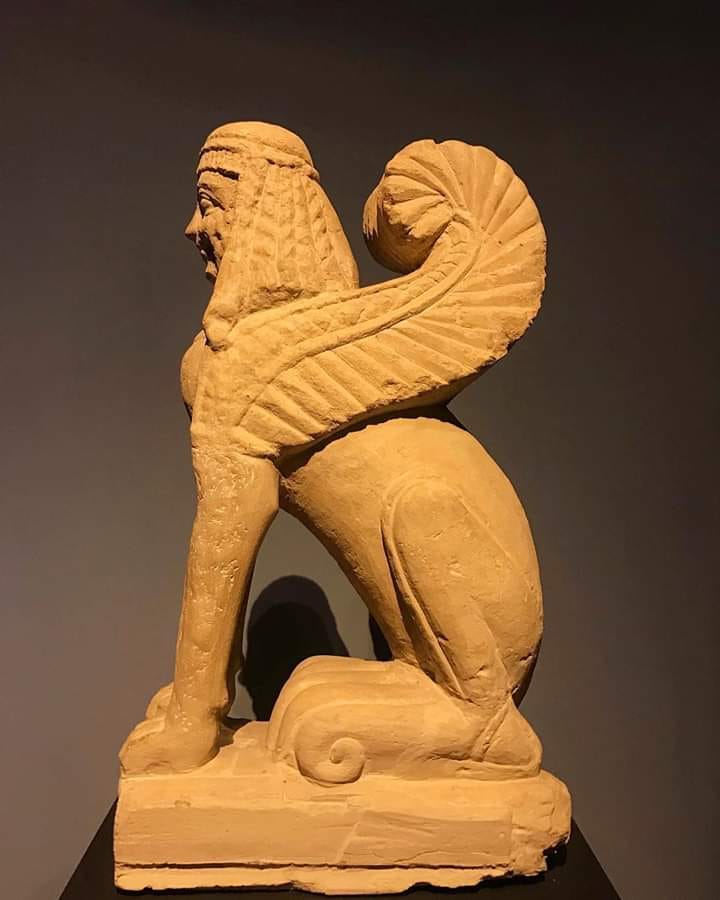
Among the masterpieces of Michelangelo Merisi, better known as Caravaggio, is certainly the Head of Medusa preserved at the Uffizi Galleries. It is a 16th-century parade shield on which the famous artist painted the head of Medusa separated from the body, already cut off by the hand of Perseus. The head appears very realistic: blood is spurting from the neck, the mythological creature’s mouth is wide open still fixed in a cry of pain, her eyes open in an expression of terror, and her serpent hair still twisted and moving. Caravaggio depicted Medusa in the instant immediately after the Greek hero cut off her head. According to one version of the myth, Perseus struck the blow while looking at Medusa reflected in a shield given to him by the goddess Athena. The mythological creature was one of the three Gorgons, the most famous, who had the power to pity anyone who looked at her with her gaze. The work was donated in 1608 by Cardinal Del Monte to Grand Duke Cosimo II on the occasion of the latter’s wedding to Maria Magdalena of Austria.
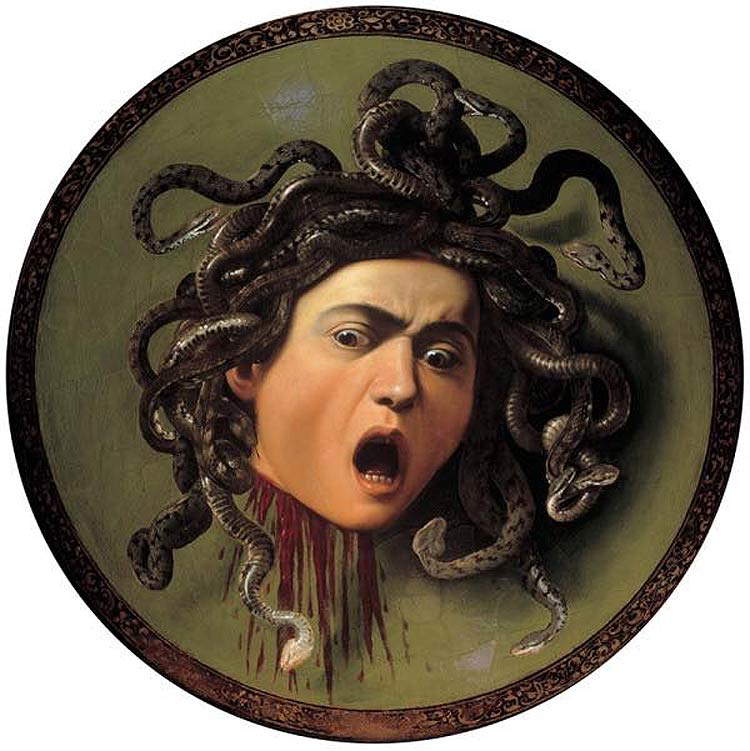
Angelic beings and demons divide the large painting of the Last Judgment, made between 1425 and 1428 by Beato Angelico and now housed in the Museo Nazionale di San Marco in Florence, into two distinct parts. With its distinctive three-lobed shape, the work is dominated at the top center by Christ the Judge surrounded by angels. Below, the uncovered tombs of the deceased indicate that the moment of the Last Judgment has arrived: on the left those who will be blessed and are on their way to the gates of the heavenly Jerusalem, with an elegant dance of angels and blessed in a meadow like a true locus amoenus; on the right the damned, who beaten with sticks and thrown to the ground by black devils enter Hell. The right end of the work in fact depicts the structure of Hell, with at its base a devil clutching between the limbs and voraciously eating the damned, and in each compartment of the underworld the viewer is shown a different eternal punishment that sinners will have to endure, with devilish beings always present. It was probably Ambrogio Traversari, a friar and scholar, who inspired the iconographic program of the work and it was he who entrusted Beato Angelico’s brush with the apocalyptic vision. The work was originally completed for the main chapel of the church of Santa Maria degli Angeli.
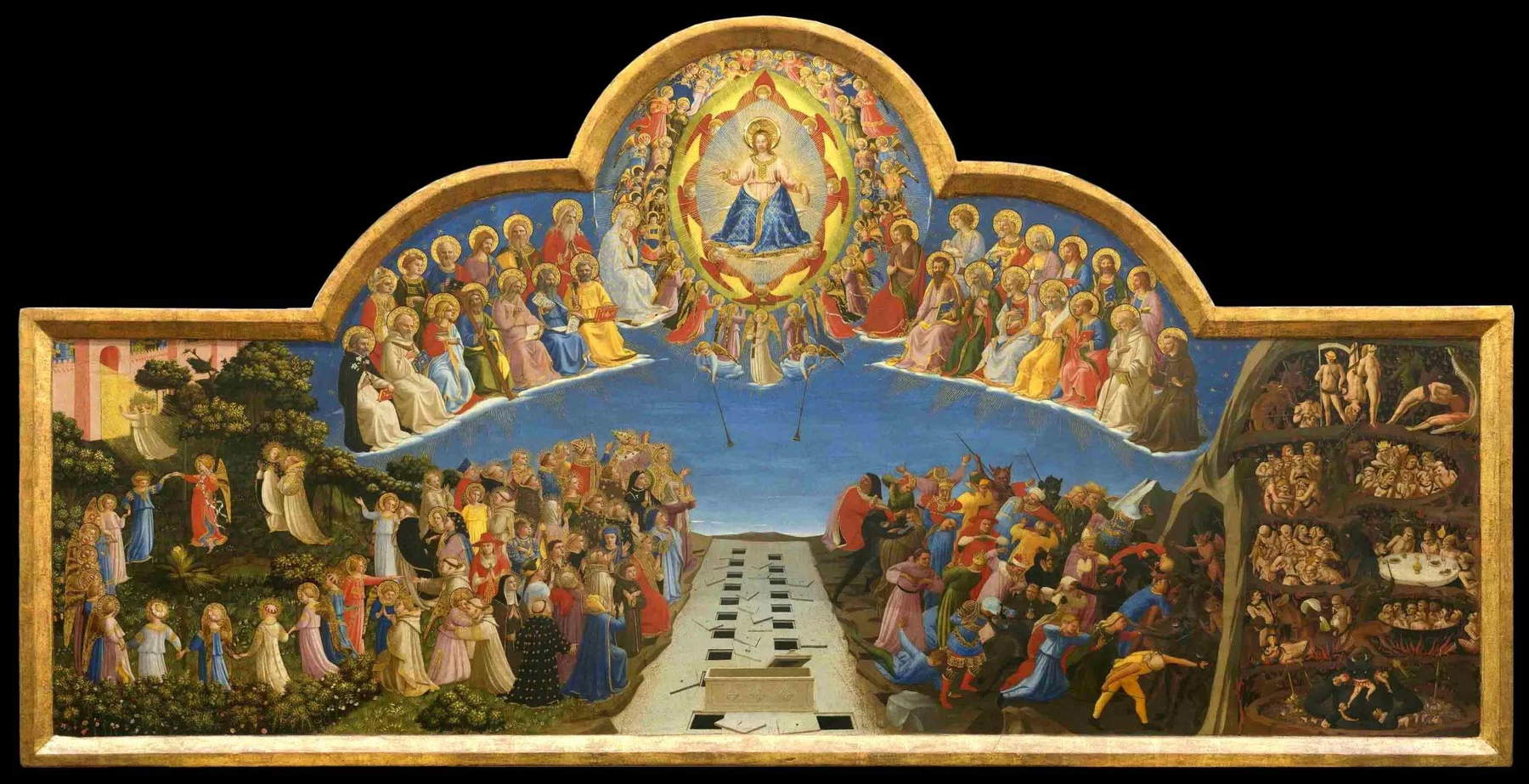
The Bargello National Museum houses the bronze and marble model of Benvenuto Cellini’s Perseus, one of the most famous statues in the Loggia dei Lanzi in Florence’s Piazza della Signoria. The triumphant Perseus wears a fabric that follows the course of his body; he is standing inside a niche, and below him appears a kind of monster bearing an inscription. The marble basement is richly decorated with garland reliefs, masks, goat heads, a gaping-mouthed monster, and at the sides two busts of female figures.
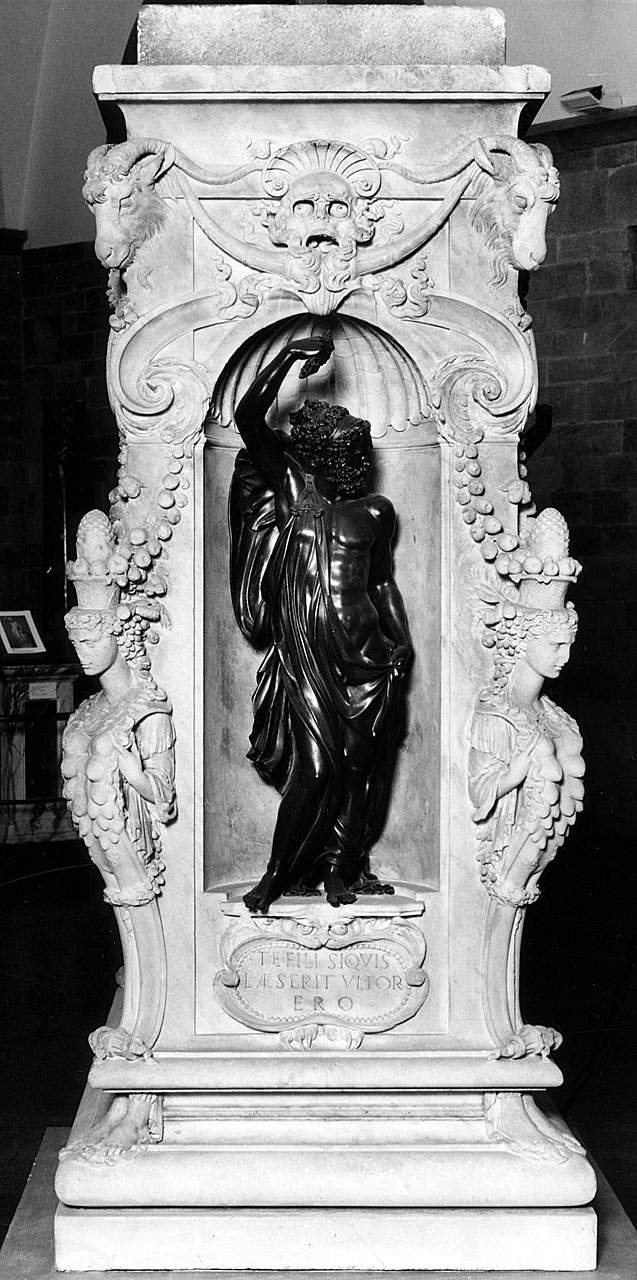
Several bronze oil lamps of Paduan manufacture dating from the 16th century are preserved in the Museo Nazionale del Bargello. One example is one dated to the first quarter of the 16th century that depicts a bizarre satyr-headed creature, depicted with its mouth wide open, its body composed of a bird of prey’s leg. The taste for these extravagant and grotesque creatures (heads resting on the legs of goats or birds of prey abound in Paduan production of the time) is typical of sixteenth-century culture. The very paws, moreover, are indicative of the area of production, since they were a characteristic element of Venetian and, more specifically, Paduan culture. This is a small bronze probably referable to the workshop of Andrea Briosco, derived from a specimen by the same artist.
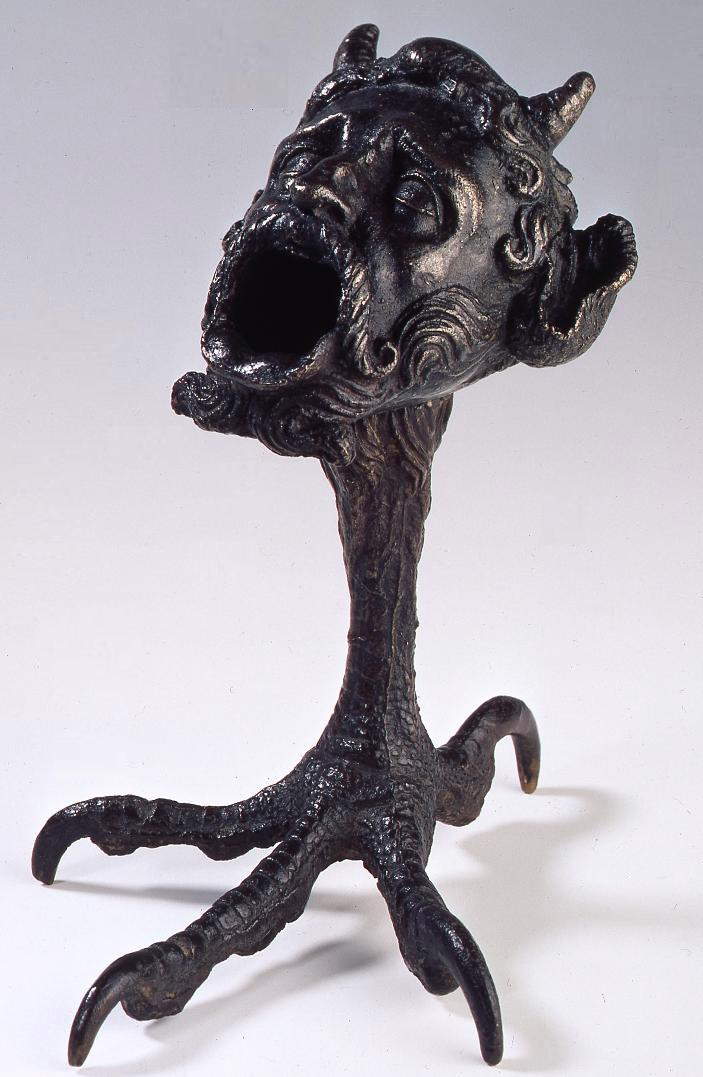
The painting with a mythological subject that Sandro Botticelli made between 1480 and 1485 depicts a young woman, dressed and coiffed in the painter’s typical style, holding a battle axe in her left hand and a centaur by the hair in her right, a creature taken from mythology that has human features from the head down to the waist and horse-like features from the waist down. According to literary sources shortly after the painting was executed, the female figure wrapped in plant shoots (perhaps olive or myrtle) has been associated with Minerva, goddess of wisdom, or Camilla, a virgin warrior who died in battle defending her homeland and an example of chastity. The maiden’s robe is also adorned with the diamond ring motif linked to the Medici family. The work in fact belonged to Lorenzo di Pierfrancesco, cousin of Lorenzo the Magnificent, and may have been commissioned for his wedding to Semiramide Appiani. The subject of the painting can be understood as virtue curbing the passionate and sanguine temperament.
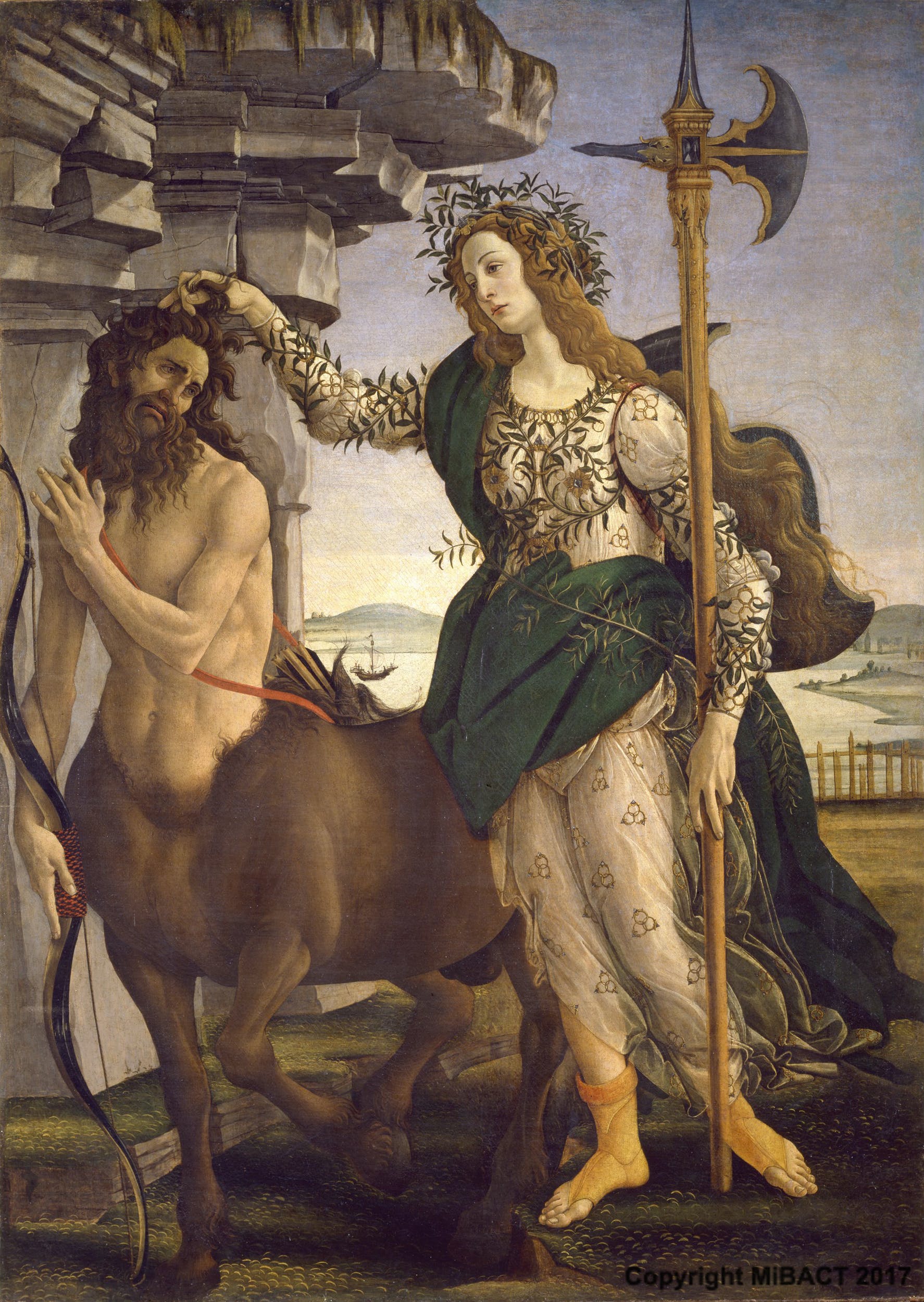
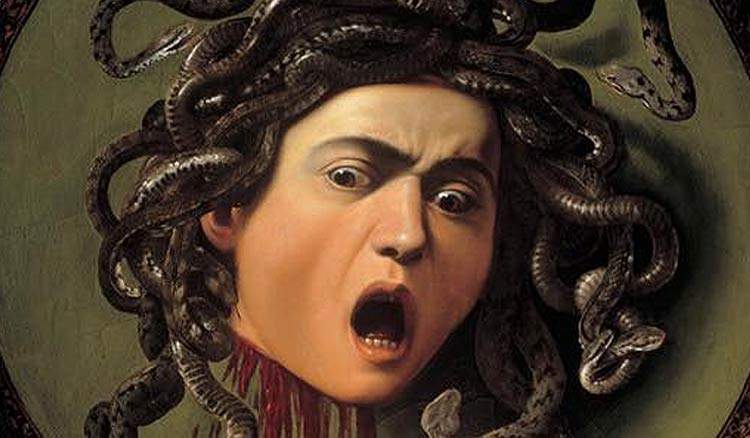 |
| Animals and fantastic places in Italy's museums: Tuscany |
Warning: the translation into English of the original Italian article was created using automatic tools. We undertake to review all articles, but we do not guarantee the total absence of inaccuracies in the translation due to the program. You can find the original by clicking on the ITA button. If you find any mistake,please contact us.